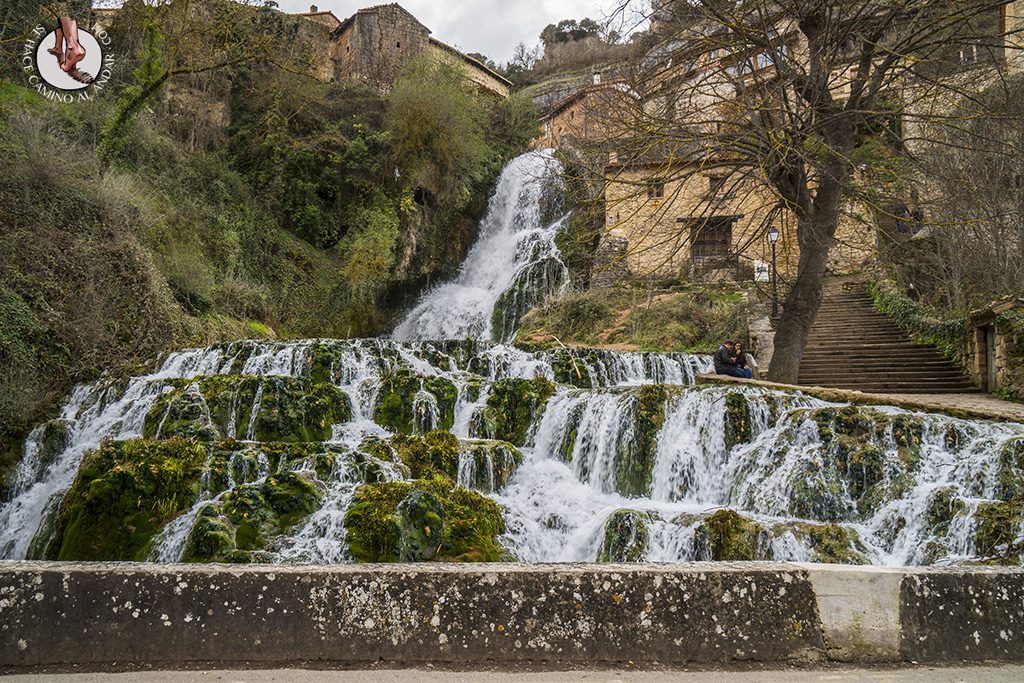Contenidos
Orbaneja del castillo burgos
the sierra de la demanda
is a town with a lot of tourism, so it is better not to go in high season or at least do it during the week. The population acquires greater beauty in the rainy season to lower the waterfall with much more water, so it is much better to go during the rainy season.
Only the residents of Orbaneja can park in the town center, but there are several parking lots on the main road. As I said, the town has a lot of tourism and if you arrive at rush hour you will have to walk a little bit, or you may not find a place.
Water Cave. You can take a guided tour of its interior. It stands out for its 120 and 80 meters long siphons. In the upper area is the Cueva del Azar where you can see cave art. It is open on weekends and in summer, but when the water flow is very large it is closed.
But in addition to seeing the Orbaneja waterfall and its pools, it is worth getting lost in its narrow streets. The whole town is on a slope, you can climb an area of stairs to the right of the waterfall to admire the buildings adapted to the terrain. If you have mobility problems, there is also a side street at the entrance to the village.
oñamunicipality in spain
And what a waterfall! Orbaneja is among the best waterfall tourism destinations (if there is such a category). It is a photogenic beauty that you can’t stop taking pictures of. The murmur of the water is constant. The locals must have already internalized it, but whoever arrives for the first time may feel a little dazed at first.
Its urban center, declared a Historic-Artistic Site since 1993, is formed by a network of narrow medieval streets that climb the hillside, all tile, stone and wooden balconies, divided into two parts by the stream that becomes a waterfall.
With the rains or the thaw, the water, which leaps everywhere in its descent along a 25-meter drop, splits the village in two halves. To see the waterfall at its peak, it is best to do so in early spring.
Above all, don’t make the mistake of asking at the tourist office where the castle is. There isn’t one. Although that does not mean that Orbaneja lacks defenses, but theirs are much more natural. It will be enough to go to the Cueva del Agua and spend some time at its viewpoint: from there you can contemplate in all its splendor the karst formations that give the town its name.
wikipedia
It was an alternative route to the so-called French route, which passed through San Martín de Elines and Santa María de Cervatos. Also, the Catholic Monarchs granted this distinguished village the title of Villa, so its inhabitants were exempt from paying taxes.
Its crystalline waters spring from the base of the Cueva del Agua, a cavern that opens in the rocky cliff that presides over the village, and divides it into two parts: Villa and Puebla, completely conditioning the life of its people.
At present, the cave can be visited with a guide and you can walk a long way inside it. Although there is no water in the cave, you can hear the sound of the nearby water echoing off the walls.
In the past, this water used to move the stones of five flour mills distributed around the side of the cave, of which there are still remains today. Its waters plunge some 20 meters towards the Ebro, breaking up into foam over crystal-clear pools of water.
The village, on a permanent slope, has been built on a few narrow terraces of tuff stone. The abundance of this material, singularizes the own popular architecture, being used profusely in the construction.
wikipedia
La localidad de Orbaneja del Castillo está considerada Conjunto Histórico desde 1993. Entre sus estrechas y empinadas calles, existe una rica arquitectura popular serrana, de la que destaca la casa de los Perros, del siglo XIV, llamada así por los siete canecillos románicos reutilizados en su alero; sobre un espigón rocoso, a los pies de la fuente, en la Plaza Mayor, hay una casa fuerte que pudo pertenecer a los marqueses de Aguilar. La Casa de los Pobres, antiguo hospital del siglo XVI, tiene un hermoso pórtico de madera y un elegante entramado de piedra toba. Estuvo en funcionamiento hasta el siglo XIX y fue administrada por una familia que daba alojamiento y comida a los caminantes. La iglesia parroquial es de origen románico aunque ha sufrido numerosas reformas.
Pero si algo caracteriza a Orbaneja del Castillo es su paisaje kárstico modelado por el agua, por lo que no es de extrañar que el espacio más amplio, dentro del núcleo, corresponda a la desembocadura de la Cueva del Agua convirtiéndola en la protagonista casi absoluta del entorno, desde ella parte un arroyo que atraviesa el pueblo para luego precipitarse en espectaculares cascadas escalonadas hacia el Ebro que discurre junto a él encajado por su propio cañón. Desde el pueblo se puede subir por un empinado sendero para llegar a una cornisa natural desde la que admirar el gran paisaje del cañón del Ebro, en este acantilado calcáreo de rocas con formas fantásticas quizás el ojo del visitante busque y encuentre la silueta de África. La cueva del Agua se puede visitar con guía durante el verano y los fines de semana para ello hay que llamar al teléfono 947 150 103 de la oficina de turismo de Sedano. La combinación de estos bellos parajes naturales y el sabor popular de Orbaneja del Castillo lo han convertido en un enclave pintoresco.
